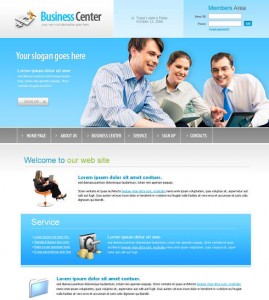
There are 3.6 billion Internet users worldwide, and each of them spends 24% of their time online social networking, 20% for reading content, and 22% for searches, according to International Telecommunication Union. It is not surprising that companies dove into this space to grow their business, and some even used it to build their startups. Since content is mainly what people are looking for, companies invest in writers and artists to develop it for their business. Thus, web copywriting rocketed into prominence and became one of the most in-demand jobs online until today.
According to Forbes, copywriting is “the art of writing persuasively in order to market a product, service, person, or idea.”
Since words speedily multiplied across the web, content marketing sprang.
The Content Marketing Institute defined content marketing as “a marketing technique of creating and distributing relevant and valuable content to attract, acquire, and engage a clearly defined and understood target audience – with the objective of driving profitable customer action.” Apparently, copywriting evolves into more robust forms such as content marketing. Moreover, content marketing is considered an art of communicating with your target audience (clients or prospects) without actually selling your products and services to them. This strategy is focused on delivering information to make the buyer more intelligent. The desirable result of this technique is that the recipients will reward you with their “business and loyalty.”
This is your guide to copywriting for online marketing materials, such as websites and business blogs:
I. The Company Website
The Content of A Business Website
- The About Page
- Product / Service Description Pages
- e-Newsletters / Features
- Contact Page
II. Business Blogging
The Content of A Business Website
In an Entrepreneur.com article, Tim Knox, founder and CEO of technology companies such as Digital Graphiti Inc. and Sidebar Systems, stresses that companies should build a web presence so potential customers, partners, and even employees can quickly and easily find out more about your business and the products or services you have to offer. He wrote, “since many consumers now search for information online prior to making a purchase at a brick-and-mortar store, your site may be the first chance you have at making a good impression on a potential buyer.”

According to Teach-ICT, there are different types of website:
- E-commerce sites – you visit these to buy something
- Information sites – such as your favourite news website
- Entertainment – such as YouTube and the BBC iPlayer site
- Business – provides support, documents and software drivers for customers
- Ideas and opinion sites – such as personal blogs or your own personal site
- Social networking site – such as someone’s Facebook page
- Portfolio site – you want to show off your work to a potential employer or client
Today, we will focus on writing for the content and menu of a business website.
The About Page
47leads, a marketing and business consulting company, emphasizes the order of the details in the page:
- A brief statement showing what your company does
- The 5 W’s
- Bulleted lists of the company’s fact sheets, key points, or milestones
- A detailed image of your company
The 5W’s are:
- Who you are: a short history, personal background, experience, or credentials
- What you do: a brief introduction to your services, products, or goals
- Why you do it: what makes you different from your competition, include your promise of quality, mission statement
- When did you start: how long you’ve been in this field and what’s your unique experience
- Where are you: having a physical address listed will add to your credibility and prove you’re a real business
Here are the other items that can be included in the website:
Consider including any of the following:
- Testimonials
- Awards and recognitions
- Company or product introductory videos
- Links to media coverage
- Press releases
- Current and past clients and partners
- Newsletter sing-up form
- Community service and charitable contributions
- Staff quotes
- Green initiatives
- Links to staff blogs
- Your services or products
- What makes you different from your competition
- Your company’s values
- Disclaimers and other legal information
- Other interesting facts
- Links to affiliate businesses you run
- Anything else that you want your potential clients to know about you
Susan Greene, professional copywriter and journalism graduate from Syracuse University, with an MBR from Southern New Hampshire University, shares pointers on how to create an About Page that sticks:
- Provide information about your background. You have to justify why people should do business with you by sharing your capabilities and what is unique about you. You can mention how long you have been in the business and your company’s milestones. This page should make readers realize that you are capable of offering an excellent solution.
- Make it speak through the language of the audience. The content of the About Page should mirror the wants, needs, objections and hot buttons of your target audience.
- Create a “conversation.” Greene encourages companies to use the first person pronoun and be more conversational because sounding friendly can make one more likeable.
- Include a story and social proof. Sharing the humble beginnings of the company and testimonials about how you now do business will add to your credibility.
- You can add photos, subheads, bullets, and graphics. Greene suggests that use of your photo “on the job” and using tools like bullets “to create a list of your products or services, describe various steps in a process, or provide a historical timeline of your company’s development. Bullets are a great way to convey a lot of information without overwhelming the reader.”
Jeff Haden, in an Inc article, also reminds businesses to keep the About Page focused on the customers, facts and figures–not on superlatives, and in progress: “Whenever you land major customers, add expertise and capabilities, enter new markets, open new locations, etc., update your About Us page right away.”
Henneke Duistermaat of KISSmetrics, in an Entrepreneur.com article, presents a proven process of developing product description pages that engage, persuade, and sell:
1. Know your buyer persona. This refers to the imaginary customer, “the person for whom you’ve developed your product and to whom you’d love to sell it” and who represents your target audience. You are encouraged to determine what makes the person laugh or what makes one hesitate to order. Understanding this will help you spot the right tone of voice that will engage the customer., transforming product-centric descriptions into customer-centric descriptions.
2. Come up with a list of features and benefits. “A feature is a fact about your product, while a benefit is an explanation of what that feature does for your reader. A benefit can be phrased as a positive (e.g., improves productivity) or as a problem that’s avoided or reduced (e.g., decreases stress).”
3. Keep the page easy to navigate. Here are some of Duistermaat’s pointers:
- Subheadings to entice scanners to start reading
- Bullet points to attract attention to key points
- A large font to improve readability
- Video or photography to increase the desire to use or buy your product
- Plenty of white space to guide readers through your content and make your page a joy to read
4. Consider the search engines too. The author said that the phrases you will use are those that people should search for on Google. To make this possible, you have to avoid jargon unless the buyer is familiar with jargon too, to use key phrase in the headline, and to optimize product images by using key phrase in the file name, image description, and alt tag.
- Avoid jargon unless your buyer uses jargon, too.
- Consider using your key phrase in your headline, subheadings, and body text.
- Optimize your product images by using your key phrase in the file name, image description, and alt tag.
e-Newsletters / Features
Some websites have a section for news, press releases, or stories that feature their store, while others opt for an e-newsletter so it can be sent directly to emails and organizes those promotional articles in an organized manner. For web designer Noam Almosnino of Web Designer Depot, the newsletter is considered an extension of the main website. He believes that e-newsletters should have short paragraphs and the order of the images and content seems fitting in the email browser. Then, there is always a call to action at the bottom of the page.
Here some tips on how to develop an e-newsletter:
- Keep the content brief. This will help you make readers realize that subscribing to your newsletter is an easy commitment. They are more likely to check it regularly if they know it would take only around five minutes of scanning.
- There should be 2-3 topics only. It can consist of the one long article plus two shorter ones. A long article may have 500 words, while the shorter ones can have 150 to 200 words. Therefore, the entire emails is about 900 words only. Neely also noted that the average consumers readers 200 words a minute. Plus, delivering valuable information will show that the email is worth their time.
- Create something easy on the eyes. When you are writing a newsletter, set your word processing program so you are writing in the same format that will appear on recipient’s screen. For text-based newsletters, this means 10-point Courier type going 60 characters (five inches) across. Always add a hyperlinked table of contents at the top. On-screen readers don’t want to work hard to find pieces of valuable information in your newsletter. In fact usability studies show most people won’t look beyond the first screen of information if there’s not something immediately interesting to them. Give them a reason to scroll down.
- Keep the tone personal and casual. This way, your audience will see “humanity” behind the corporate image and relate more to the newsletters.
- The newsletters should contains materials you wish customers know about the service or the product since everything they know is in the FAQ page only. Here are the possible guide questions:
- What needs to be explained to them?
- What part of your business do they need a brief lesson on?
- What could they be told that would make their experience with you better?

Bonus Writing Tips for Website Pages
Kelly Mango of OpenVine Solutions encourages writers to use the inverted pyramid method. It means placing your conclusions at the beginning of the page and work backwards from there. This emphasizes the most important information front and center. She also stresses the importance of writing with authority. Her other tips are the following:
- Come up with short, meaty paragraphs with white space between them.
- Discuss only one topic per paragraph.
- Use internal subheadings to make browsing easier.
- Insert internal links to related topics instead of cramming too much information onto one page.
- Use “you” instead of “I” to connect with readers.
- Write brief sentences.
The Search Engine Optimization (SEO)
The University of Chicago IT Services defines SEO as the process of improving your website’s results in search engines. “It deals with unpaid advertising and can specifically include such techniques as improving your page titles and link phrases, increasing your keyword density, and adding web referrals to your site.” IT Services cites a paper from one of Google’s founders showing that if links directing to your page consist of the relevant keywords, it will place your page higher in search engine results.
To improve your site’s ranking, the Michigan Technological University has the following tips for content writers:
1. Write relevant content. To come up with a searchable keyword phrase for each page, reflect on how a reader might search for that specific page. “Then, repeat this phrase several times throughout the page—once or twice in the opening and closing paragraphs, and two to four more times throughout the remaining content.”
2. Use helpful links within the text. Avoid using “Click here” as it has no search engine value beyond the attached URL, but the phrase or title of the destination will serve as keywords themselves and will boost your search engine rankings as well as the ranking of the page you are linking to.
Contact Page

Ramsay Taplin of the Blogtyrant points out that the Contact page should have a “seductive copy” to make sure the client would want to have a deal with you.
Meanwhile, marketing and business consulting company 47leads stresses that the following should be included in the Contact page:
This list includes the bare minimum that you should include in your contact page.
- Name of the Business
- Address
- Telephone number
- Hours of operation
- Expected response time for emails or calls
- Instructions, e.g. call us to book an appointment, write to us to ask a question.
II. Business Blog
What is a Business Blog? It is a corporate blog, a platform used by a company to boost its presence online. This is a marketing strategy that aims to deliver information to people. It can enhance a company’s image and likeability. Understanding why companies should create a blog will help writers to determine the angle of every post. To illustrate this, here are some reasons, according to Dechay Watts of Sprout Content, why businesses must have a blog:
- It creates free PR. Business bloggers are often interviewed by journalists as industry experts. Get some press!
- A blog builds confidence, relationships and sales. Customers will look to you as a reliable resource for information on your industry; then come to you to buy.
- You can tell your brand story. A blog is a great place to offer more insight into your company, philosophy, employees, and ideas.
- Gives you insight into your audience. Blog analytics allow you to track readers, click-throughs, popular topics, shares and comments. You can even tell what day of the week your visitors prefer to stop by.
- Your blog is the heart of all of your content marketing efforts. It’s fodder for Facebook, Twitter, LinkedIn, email newsletters, e-books, etc.
- Blogs share your expertise. How else will you position yourself as a subject area expert and thought leaders?
These reasons are also ideas for the blog posts. For example, a blog post can be about instructions on how to use a particular item or feature of an item. This can improve the audience’ perception of the company’s credibility. Social Media Today shares that when writing for a business blog, you need to define your target audience first. This will guide the angle of your post. For example, your target audience for a real estate business are people who want to buy or sell homes. Your post should consist of sentences that will attract them. Then, ask yourself these questions: What is my story about? What is the main point I want to get across?
The Different Formats for A Business Blog
- The How-to List – This shares useful tips and techniques for readers
- The List Post – This lists ideas, tips, suggestions, discoveries, or references
- The Story – This should tell a story to the readers. Make sure to establish a connection between the readers and what you are trying to share with them.
- The News-Feature – This recounts a particular event (launch of a product, opening of a store, or an award your company received) in a conversational and more casual manner. Always focus on what this event means for the readers instead of sounding like you are promoting your business.
The Basic Structure of A Business Blog
1. The Engaging Headline. Make sure it has the keyword phrases but still catchy, controversial, or even humorous. You can use strong words or make it a question as long as the message benefits the audience.
2. The Lead Paragraph. Tell readers what your post will be about right away. Give them a reason to stick to your post.
3. Main Body. This supports your lead paragraph with evidence, stories, figures, or pictures.
4. Discussion Points. To engage your readers, ask for their thoughts, suggestions, or questions.

Bonus Blogging Tips
Social Media Examiner compiled business blogging tips from different experts in one post, and here are some of them:
“Treat each article as a product. A product is something that people would potentially pay for. Would they also pay for your articles? Simply starting to think, “Would anyone pay for reading this?” — Leo Widrich, co-founder of BufferApp.com.
“Let your personality come out in your posts. Don’t be afraid to give an opinion or let your true colors show. People want to know the person behind the business these days, and as long as you can still keep it professional, it helps to write in a way that lets people know there’s a living, breathing human being behind the blog.” —Louise Julig, Social Media Examiner’s case study writer, freelance writer

